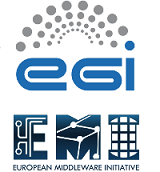Speaker
Description of the work
Using the Vine Toolkit [2] we connected Liferay portal [3] with VOMS [4] to enable strong grid security and use a DPM Storage Element as a grid resource to store DICOM images. For domain specific data recording we developed forms using web-services, Java and Flex portlets. We work on a data virtualization layer that coupled to a metadata registry [5] enables semantic queries over different data repositories.
Overview
PARTNER grid prototype [1] is a data-driven platform for recording and sharing medical data within the hadron therapy community. The idea is to provide secure cross-border access to heterogeneous repositories while leaving data where it was created and not copying it centrally (data warehousing) due to data privacy and ownership concerns. Our solution is to describe local data using metadata and use federated queries to provide users with a unified view over distributed resources as a virtual database.
URL
http://partner.web.cern.ch/
Impact
The portal is an easy to use tool for all the actors involved in the hadron therapy domain: medical doctors can securely import, transfer and view patient related information and researchers can construct complex queries. Moreover patients could record their quality of life during and after the treatment. Specific roles and privileges are protecting data and actions of actors using policies enforced by VOMS credentials.
Conclusions
We demonstrate how we use grid services to securely integrate medical data from various sources. The combination of enterprise portal Liferay and Vine Toolkit provides an easy to use grid-enabled environment where additional services could be prototyped and tested. To improve the portal services, data provenance and data mining aspects of our platform we hope in close interactions with other communities and projects in EGI.
References:
1. F. L. Roman and D. Abler, Services of the Hadrontherapy Information Sharing Platform. Legal and Ethical implications, PARTNER Workpackage 22 and 23 - Deliverable 2, Tech. rep., CERN (June 2010).
2. Vine Tookit: http://fury.man.poznan.pl/vinetoolkit/
3. Liferay portal: www.liferay.com
4. VOMS: https://voms.ific.uv.es:8443/voms/vo.partner.eu
5. cgMDR: https://cancergrid.org/

